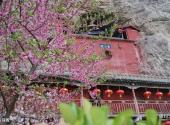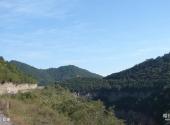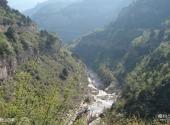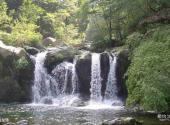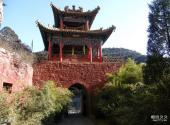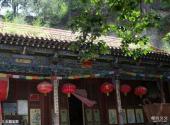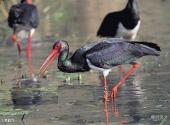
Scenic spot introduction:
The Gushe Mountain has crisscrossed ravines and strange landforms, and can be called "the largest canyon in southwestern Shanxi". This mountain is named after the legend of the goddess Gushe shooting tigers for the people. It is a branch of Luliang Mountain. The mountains here are steep, with towering cliffs, dense caves, surrounded by pines and cypresses, and lush forests. In the elegant environment, the two fairy caves in the north and south echo each other, with a trench as deep as 50 meters lying in the middle. The two caves are separated by the deep trench and cannot be crossed. The Taoist temple buildings in Xiandong were first built during the Wude period of the Tang Dynasty. Later, some Buddhist temples were built to mix with the original buildings, making Gushe Mountain a gathering place for three religions and nine streams. Gushe Mountain is located in Gushe Village, Jindian Town, Yaodu District, Linfen City, 35 kilometers west of Linfen City, with an area of 40 square kilometers. Gushe has beautiful scenery, pleasant seasons, and large areas of virgin forest showing the original style of nature. The sun rises and the forest opens, the clouds return and the caves are silent, the sun rises and the evening falls, and the weather is endless.Attractions distribution:
There are five scenic spots in Gushe Mountain and more than 50 scenic spots. The five scenic spots are: Sleeping Fairy Peak, Beixian Cave, Yunwu Temple, Nanxian Cave, Longxu Waterfall, and Sleeping Fairy Peak. The main attractions include the Main Hall, Zhaotianchi, Huixian Terrace, Shenju Cave, Lotus Cave, Iron Buddha Cave, Queen Mother Pavilion, Eight Immortals Cave, Yunwu Temple, Han Xiangzi Temple, Sheshen Cliff, Wulong Pond, Ruyi Valley, Song Wang Stone, Dressing Table, General's hat, Nantianmen, horse-tethering post, fairy mirror stone, chessboard stone, etc.Scenic spot qualifications:
National 2A-level scenic spots, provincial scenic spotsScenic spot features:
Photography, mountain climbing, religious and cultural tourism, temples, mountains and riversBest time to visit:
Linfen has a temperate continental climate with four distinct seasons, with rain and heat at the same time. Winters are long, dry and cold, and summers are short, rainy and hot.
The best time to travel is in spring and autumn.
Shopping recommendations:
(Local specialties) Wing nut oil, Longci garlic, chives, Jindian Town water chestnuts, lotus root, oil dates, and sorghum smoked vinegar.
(Special delicacies) Wu’s bacon, lotus root juice, beef meatball noodles, and Yellow River carp.
Scenic spot location:
China>Shanxi Province>Linfen City>Yaodu District>Liucun Town
How to get there:
There is no direct shuttle bus to the scenic spot. You can first go to Liucun Town, Yaodu District, Linfen, and then charter a bus to the scenic spot. You can also charter a car directly in Linfen City
to go to Gushe Shanfeng, usually the average round trip is 25 yuan per person.
Scenic area map:
Click to expand the scenic area map
Gushe Mountain ticket price:
The ticket price is 25 yuan.
Scenic area opening hours:
7:00—17:00

